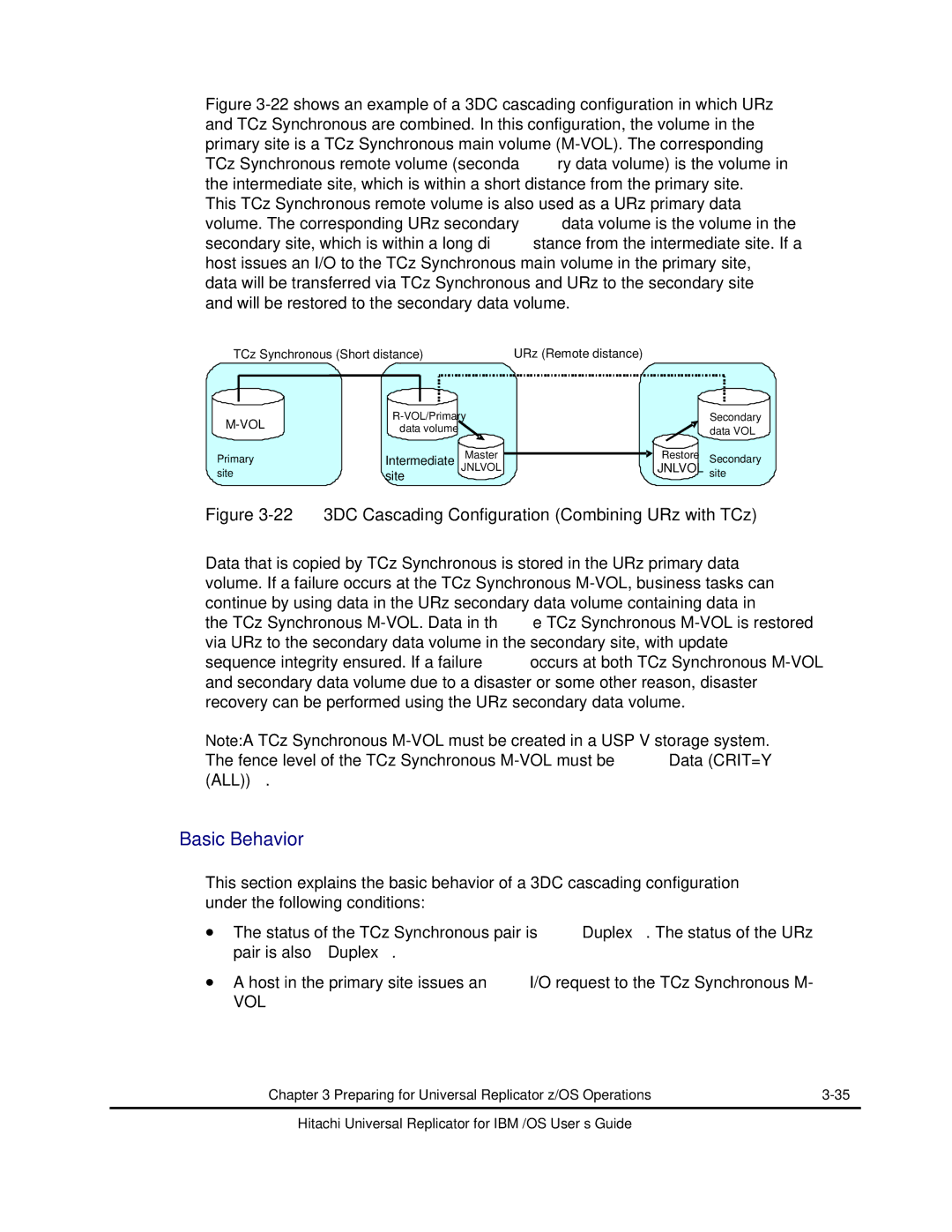
Figure 3-22 shows an example of a 3DC cascading configuration in which URz and TCz Synchronous are combined. In this configuration, the volume in the primary site is a TCz Synchronous main volume (M-VOL). The corresponding TCz Synchronous remote volume (secondary data volume) is the volume in the intermediate site, which is within a short distance from the primary site. This TCz Synchronous remote volume is also used as a URz primary data volume. The corresponding URz secondary data volume is the volume in the secondary site, which is within a long distance from the intermediate site. If a host issues an I/O to the TCz Synchronous main volume in the primary site, data will be transferred via TCz Synchronous and URz to the secondary site and will be restored to the secondary data volume.
TCz Synchronous (Short distance) |
| URz (Remote distance) | |
Secondary | |||
data volume |
| data VOL | |
|
| ||
Primary | Intermediate | Master | Restore Secondary |
site | JNLVOL | JNLVOL site | |
site |
| ||
Figure 3-22 3DC Cascading Configuration (Combining URz with TCz)
Data that is copied by TCz Synchronous is stored in the URz primary data volume. If a failure occurs at the TCz Synchronous
Note: A TCz Synchronous
Basic Behavior
This section explains the basic behavior of a 3DC cascading configuration under the following conditions:
•The status of the TCz Synchronous pair is Duplex. The status of the URz pair is also Duplex.
•A host in the primary site issues an I/O request to the TCz Synchronous M-
VOL
Chapter 3 Preparing for Universal Replicator z/OS Operations |
